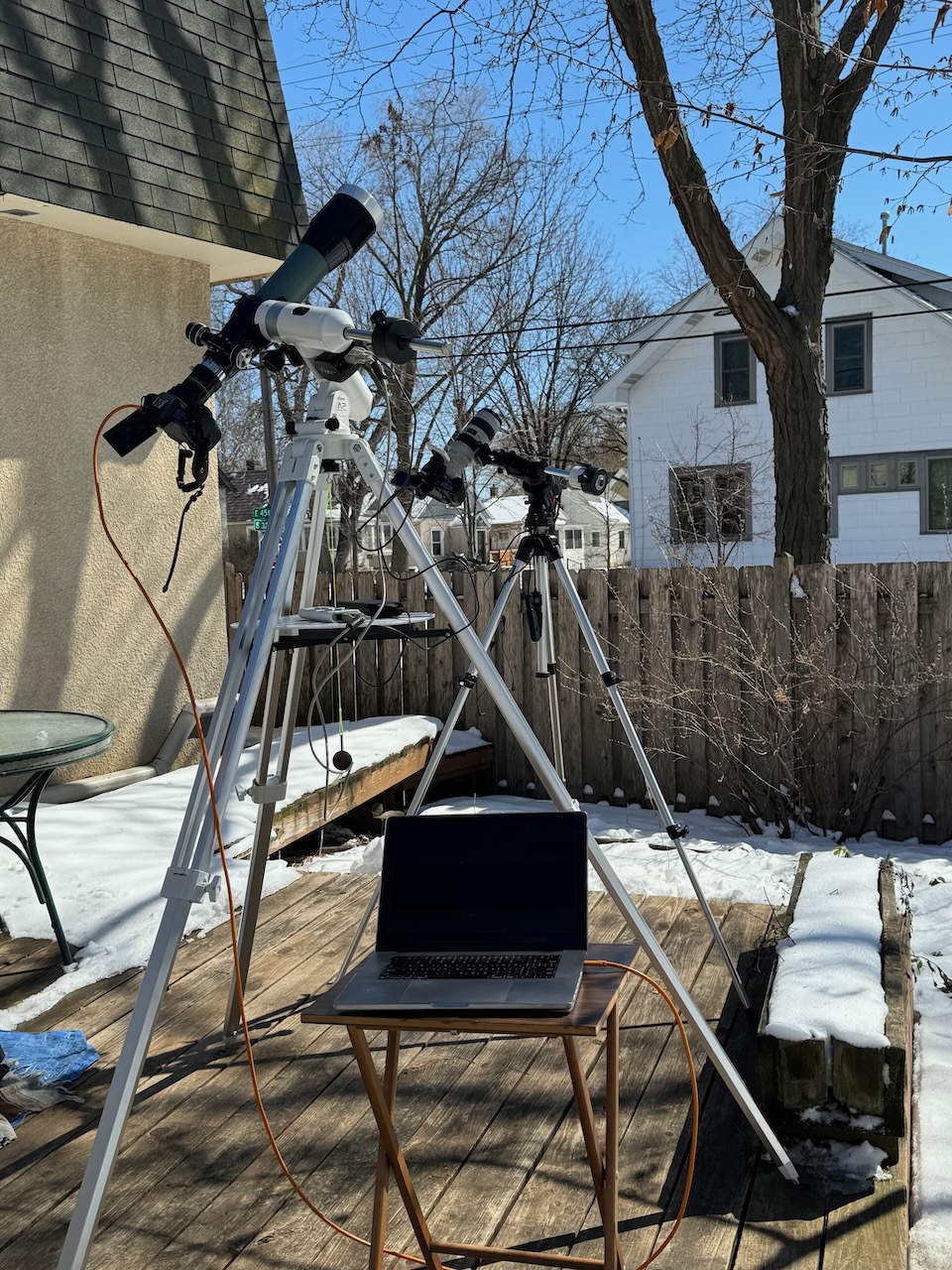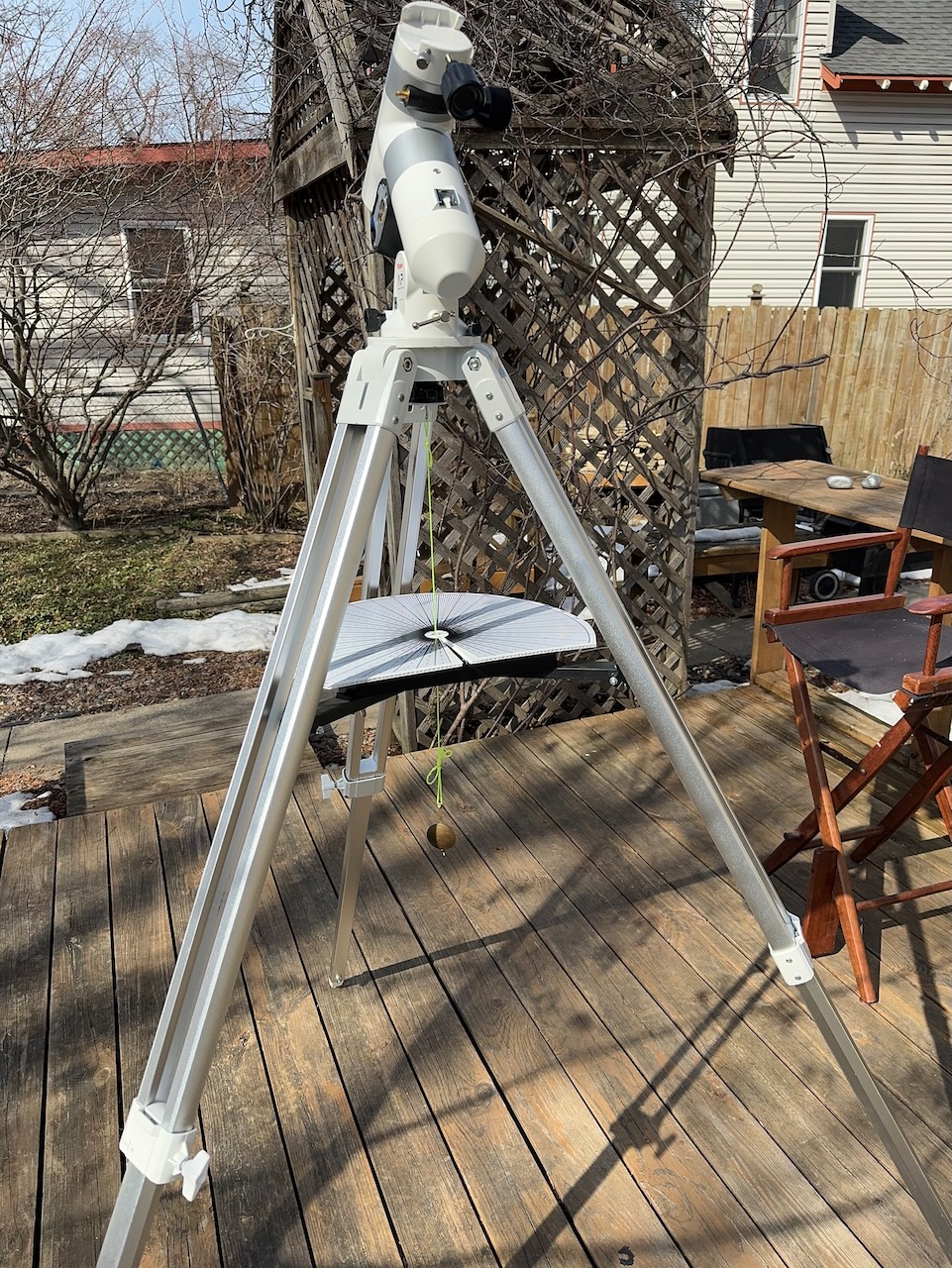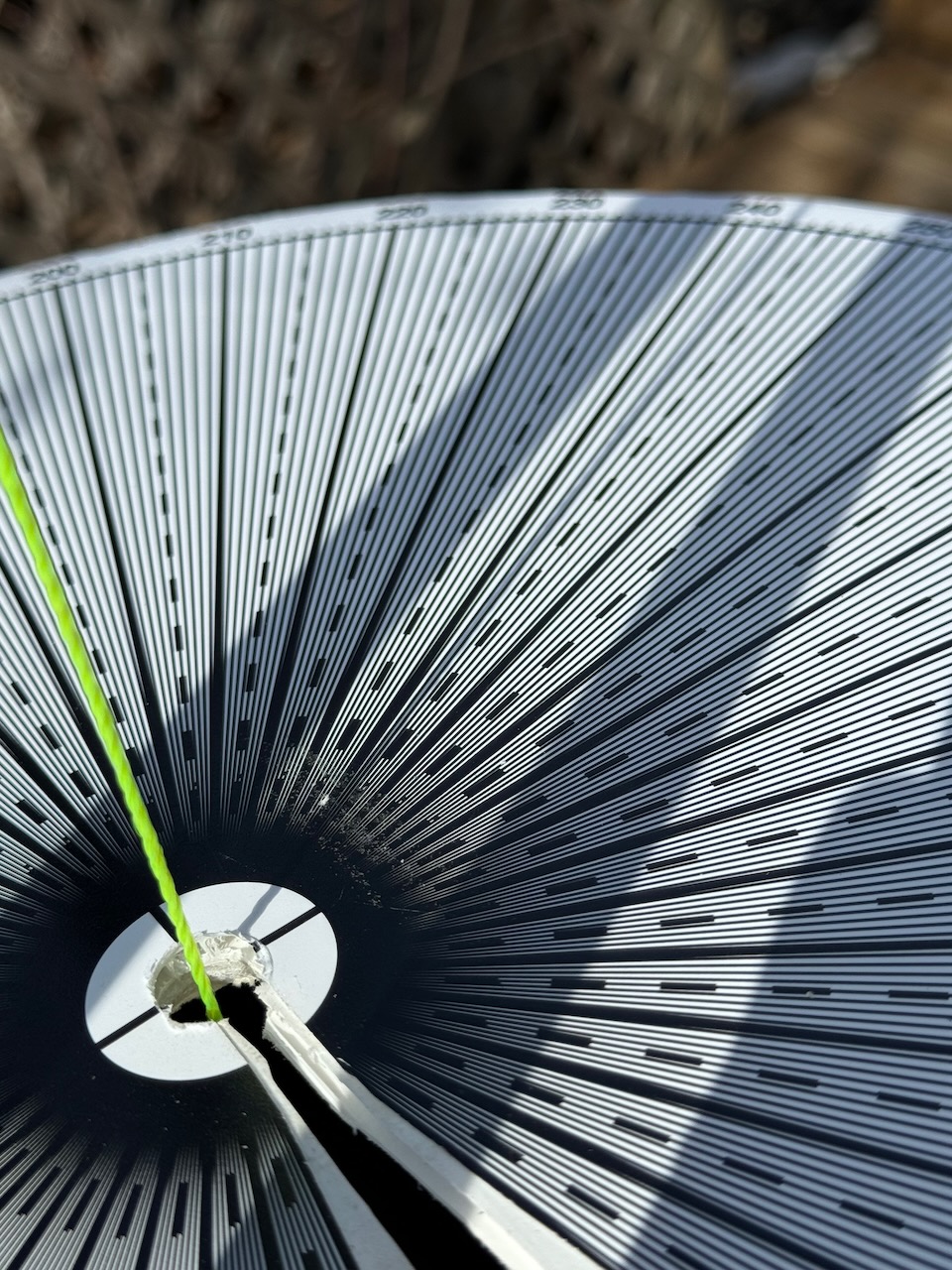
While Poldi was preparing food-for-the-masses, I was preparing other things. The big attraction the eclipse held for me was its rare opportunity to capture unique photos of the sun.
In 2017 I had participated in “The Modern Eddington Experiment“, trying to photograph the nearby stars to see if they were deflected by the sun’s gravity as Einstein predicted. My results were inconclusive, but I really enjoyed the challenge of getting the pictures and analyzing the results afterward.
This year I registered to contribute to the Eclipse Mega Movie, a less complex project but one that matched my desire to capture the corona, which as we near the peak of the solar cycle should be even larger than it was in 2017.
To do this, I needed to precisely control the camera during totality. As often occurs with our rapidly evolving technology, much has changed in the seven years since 2017. I had a new camera and a new computer, several hardware and software versions later than my previous eclipse session. The software application I had used before had become obsolete, no longer able to run on the new laptop and operating system. The author had not migrated it to the latest platform.
Fortunately, a new program had been created that could fill its role– it had fewer features but was entirely adequate for what I wanted to do. I was pleased to discover it.
I also wanted to make a timelapse of the eclipse. This required that the sun remain in the telescope’s field of view for the three-hour duration of the eclipse. It would require a tracking mount to follow the sun’s motion across the sky. And the mount needed to be carefully aligned with the Earth’s axis to avoid the sun drifting out of the frame. If it was not aligned accurately, I would have to make periodic manual adjustments to re-center the image. I really didn’t want to do that, or at least I wanted to do it as few times as necessary.
Getting a telescope mount to be tightly polar aligned is fairly easy at night, when Polaris and the nearby guide stars are visible as a reference, but I didn’t know if I would be able to do this the night before the eclipse– leaving my equipment out unattended for very long makes me nervous.
So I devised a way to get at least “mostly” polar aligned during the day, when the only star visible is the sun. I equipped my tripods with a plumb bob– which provides a perfect reference to the center of the Earth– the very definition of “up and down”. I could then examine the shadow of the string to see where it landed on a large protractor scale. Knowing my geographic location and the time of day, I would know where the sun should be with respect to polar North. I can shift the tripod so that the shadow lands at the exact position on my modern day sundial!
I fabricated the gadget and tested it in my backyard a few times and compared it to the nighttime alignment. I was pleased to see the North Star in the polar alignment scope close to the target on the reticle! Most of the error seemed to be in setting the elevation angle (the latitude), not the direction of “north”.
The mount has an elevation scale, but it is rather coarse and too small to get it accurately set to less than a degree. I have some ideas for this setting too, maybe combining a surveyor’s theodolite with a mariner’s sextant! That will have to wait for next time.


Thor and Poldi’s Eclipse Party 2024
previous | beginning | next


Pingback: Eclipse Party 2024- T-shirts | Thor's Life-Notes
Pingback: Eclipse Party 2024- it begins | Thor's Life-Notes